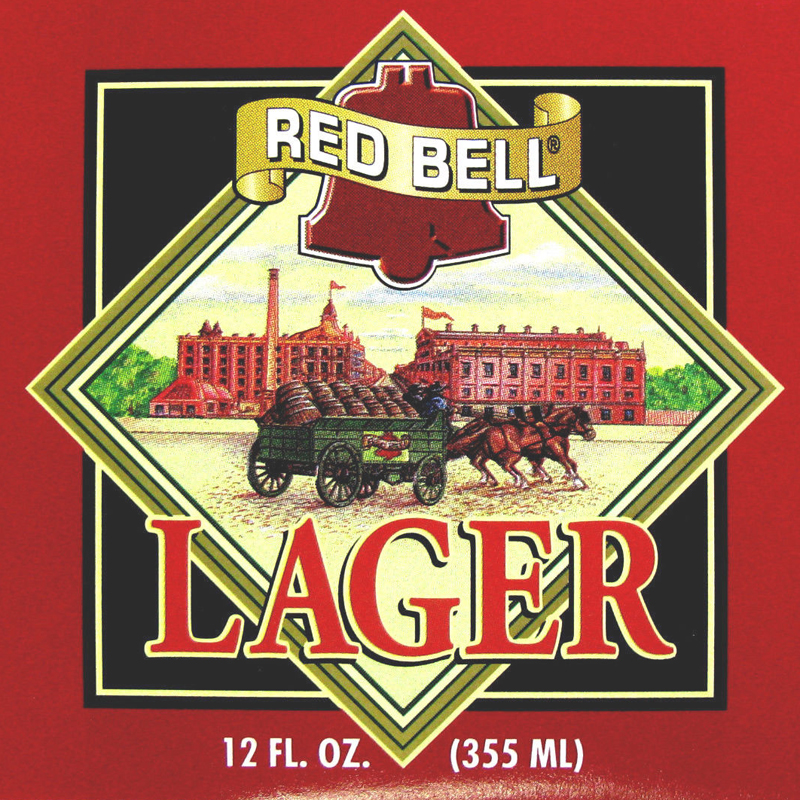As Philly Beer Week Starts, Does This Tale Ring a Bell?
The billboards started popping up in the Philly area in the autumn of 1993: “Philadelphia Is Putting Blondes Behind Bars,” a ribald double entendre aimed at advertising what the region’s newest brewing entity was calling Red Bell Blonde Ale. If the meaning of the billboards was somehow lost on a consumer, then the equally ubiquitous slogan, “Put a blonde at your table,” was there on posters, postcards, coasters, etc., as backup.
James Bell, an ex-college football player and securities broker, and Jim Cancro, a civil engineer turned brewer, had closely followed the rise of the Boston Beer Co. a few hundred miles up the East Coast, and sought to replicate that firm’s rollicking success out of Philadelphia.
They, like Boston Beer early on, would contract with breweries operating under capacity to make their own brands, including the Red Bell Blonde Ale and a lager called Red Bell Amber. This would free Bell and Cancro from the physical costs of a brewery, and its upkeep, and allow them to focus on marketing their new wares to the masses—something they did with gusto.
 There were the billboards and the coasters, of course. There was also the launch party in January 1995, at the Egypt nightclub, with Philadelphia Mayor Ed Rendell the guest of honor. Local celebrities, including Philadelphia Eagle Ray Ellis, invested in the brewery and helped spread the beery word.
There were the billboards and the coasters, of course. There was also the launch party in January 1995, at the Egypt nightclub, with Philadelphia Mayor Ed Rendell the guest of honor. Local celebrities, including Philadelphia Eagle Ray Ellis, invested in the brewery and helped spread the beery word.
The old Veterans Stadium, home then to both the NFL’s Eagles and baseball’s Phillies, soon carried Red Bell brands. In a nationwide first for what was then called micro-brewing, Red Bell opened a working brewpub inside another sports venue: the recently constructed arena for the NBA’s 76ers and the NHL’s Flyers. Soon after, Red Bell opened a headquarters brewery in the city’s Brewerytown section; and its repertoire expanded to include a well-regarded Scotch ale, a pale ale and a black cherry stout.
Sales ballooned by double-digit percentages in 1995 and 1996. The sky seemed the limit. And then … everything went spectacularly kaput.
Philly is one of America’s premier beer towns, with several fantastic breweries in the city limits and several more just beyond, not to mention Monk’s Café, arguably the womb of Belgian-beer popularity in the United States. (And, while we’re at it, the city is home to some of the nation’s more original beer-writing talent, including Lew Bryson, Don Russell (a.k.a. Joe Sixpack) and Jack Curtin.)
Red Bell has itself been one of Philly’s most significant contributions to beer, though not for a particularly joyful reason. It is the most jarring cautionary tale in smaller-scale American brewing over the last quarter-century—one to remember as Philadelphia Beer Week gets underway and as the number of U.S. breweries continues to swell.
James Bell was a big admirer of Jim Koch, co-founder and (to this day) driving force behind Boston Beer. Bell even referred to his new company as “the next Sam Adams” during its well-covered launch in the mid-1990s.
Yet, whereas Boston Beer grew steadily and with targeted force, Red Bell grew manically, its beer brands increasingly hit or miss quality-wise and its super-charged production soon outpacing any real demand. The marketing had been spot-on, brilliant even; the product less so.
In a bid to raise funds quickly, Red Bell went public—Boston Beer had, after all, and successfully. But the gambit proved a fleeting salve: After peaking at more than $5, Red Bell’s share price dropped below a quarter and then below a penny. Its Brewerytown headquarters went into foreclosure, and the state revoked the company’s brewing license because of $80,000 in unpaid payroll taxes.
At the end, Red Bell proved too broke to go officially bankrupt: the legal fees involved were too much for it to pay. Instead, it entered a years-long limbo of legal wrangling and speculation, its brands slowly fading from shelves, menus and taps.
That ghostly continuance saved Red Bell from becoming one of the nearly 200 U.S. breweries and brewpubs to close from 1996 through 2000, a shakeout that set the table for American brewing’s phenomenal growth over the last 15 years. The company, however, was emblematic of the brew-it-and-they-will-come ethos of much of smaller-scale brewing in the 1990s. For every Sam Adams, there seemed to be at least one Red Bell, if not many more.
Read more Acitelli on History posts.
Tom Acitelli is the author of The Audacity of Hops: The History of America’s Craft Beer Revolution. His new book, American Wine: A Coming-of-Age Story, is available for pre-order. Reach him on Twitter @tomacitelli.

Leave a Reply